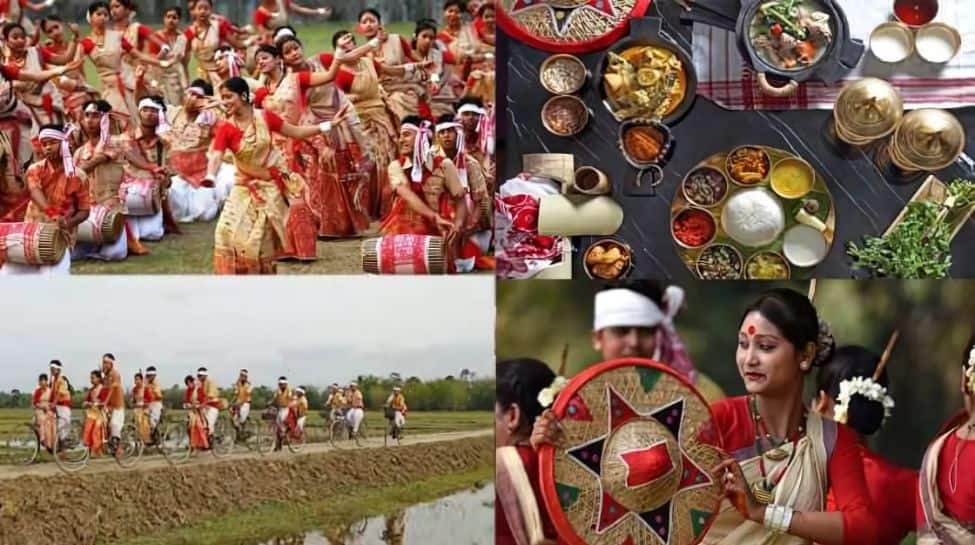Kati Bihu, also known as Kongali Bihu, is one of the three major Bihu festivals celebrated in Assam. Unlike the more joyous Bohag Bihu and Magh Bihu, Kati Bihu is observed with simplicity and solemnity, symbolizing scarcity and hope as the farming community prays for a bountiful harvest.
The Significance of Kati Bihu
Celebrated today, i.e. Thursday, October 17, 2024, Kati Bihu marks a crucial phase in the agricultural cycle of Assam. Held during mid-October, the festival coincides with the period when the crops are still growing, but the previous harvest has been consumed, and the granaries are empty. This transitional period reflects the uncertainty faced by farmers, giving the festival its alternative name “Kongali Bihu,” meaning “Bihu of scarcity.” While Bohag and Magh Bihu are celebrated with exuberance, Kati Bihu emphasizes humility, reflection, and prayers for prosperity.
The festival reflects not only an agricultural milestone but also the spiritual and cultural ethos of Assam. It emphasizes gratitude towards nature, hope for a good harvest, and the importance of perseverance in times of hardship.
Rituals and Traditions: Invoking Protection and Prosperity
Kati Bihu is observed with several unique rituals that highlight its themes of protection, hope, and faith in the cycles of nature. Some of the key traditions include:
1. Lighting of Earthen Lamps (Sakis): One of the most iconic rituals is the lighting of small earthen lamps called sakis, which are placed at the base of the tulsi plant (holy basil) in the courtyard and along the edges of paddy fields. This act symbolizes the dispelling of darkness and the invocation of divine blessings for crop protection and family well-being. The lamps are believed to ward off evil spirits and attract positive energy.
2. Tulsi Worship: The tulsi plant, considered sacred in Hinduism, plays a central role in Kati Bihu rituals. Families wrap the plant with a cotton cloth and light lamps around it, praying for the protection of crops and the purity of the home. The worship of tulsi signifies a plea for nature’s protection, ensuring the survival of young crops.
3. Offering of Akash Banti (Sky Lamp): In some regions, people also light an *Akash Banti*, a lamp hung high on a bamboo pole, symbolizing the connection between the material and spiritual worlds. It is believed to guide the souls of ancestors back to heaven and seek their blessings for a prosperous harvest.
4. Prayers for Crop Protection: Farmers perform rituals to safeguard their fields from pests and pray for divine intervention to ensure a successful harvest. Ceremonies are often held to drive away harmful birds and insects that threaten the young crops.
Symbolism and Cultural Context
Kati Bihu represents the close relationship between Assam’s agrarian society and the land. It serves as a reminder of the rhythms of rural life, where festivals are closely tied to nature’s cycles. The solemn rituals underscore the interdependence between humans and the environment, encouraging sustainable agricultural practices and respect for nature.
Though less exuberant than the other Bihu festivals, Kati Bihu carries profound meaning. The lighting of lamps symbolizes the triumph of hope over despair and light over darkness, reinforcing the idea that better times are ahead. Families come together during this time in quiet devotion, offering prayers for abundance in the months to come.
Evolving Practices and Modern Relevance
As with many traditional festivals, Kati Bihu has evolved in modern times, especially in urban areas. While rural communities continue to observe the traditional customs, urban households may simplify the rituals. Despite these changes, the essence of Kati Bihu remains intact—an emphasis on hope, resilience, and the importance of community solidarity.
In recent years, there has been a growing focus on preserving the cultural heritage of Kati Bihu. Efforts have been made to revive traditional practices and educate younger generations about the significance of the festival. Additionally, contemporary challenges like water scarcity and climate change have given Kati Bihu new relevance, as farmers face increasing difficulties in maintaining their livelihoods. The festival has become a platform for discussions on sustainable farming and the need for agricultural reforms.
Kati Bihu stands as a powerful reflection of Assam’s cultural identity. It embodies the resilience of the Assamese people, their deep connection to the land, and their unwavering faith in nature’s cycles. As families light the sakis and pray for a fruitful harvest, Kati Bihu symbolizes the enduring hope that even in times of scarcity, abundance is on the horizon.
The festival’s core values—humility, respect for nature, and communal solidarity—remain unchanged, providing a link between the past and the future. In this way, Kati Bihu continues to play a vital role in preserving Assam’s cultural fabric, fostering a sense of belonging and shared heritage across generations.

